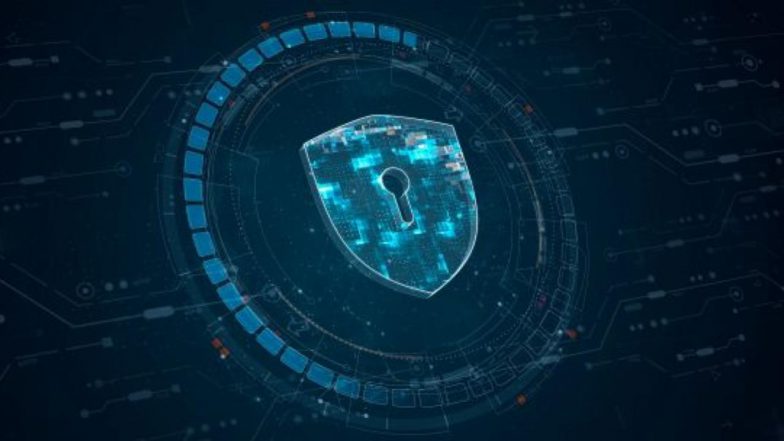Summary
Cyber security is the practice of protecting internet-connected systems, including hardware, software, and data, from digital attacks and unauthorized access. It encompasses a range of technologies, processes, and controls designed to safeguard against cyber threats and ensure the confidentiality, integrity, and availability of information. Effective cyber security is crucial for organizations and individuals alike, as it helps prevent data breaches, financial losses, and reputational damage.
OnAir Post: Cybersecurity
About
Source: Gemini AI Overview
Key Aspects of Cyber Security
- Protecting Systems and DataCyber security aims to secure computer systems, networks, programs, and data from various threats, including malware, phishing, ransomware, and data breaches.
- Confidentiality, Integrity, and AvailabilityThese are the three core principles of cyber security. Confidentiality ensures that only authorized individuals can access sensitive information. Integrity ensures that data is accurate and has not been tampered with. Availability ensures that systems and data are accessible when needed.
- People, Processes, and TechnologyEffective cyber security relies on a combination of these three elements. People need to be aware of security risks and follow best practices. Processes need to be established for secure operations and incident response. Technology, such as firewalls, antivirus software, and intrusion detection systems, is essential for protecting systems and data.
Why is Cyber Security Important?
- Protecting Sensitive InformationCyber security is vital for safeguarding personal and business information, including financial data, customer details, and intellectual property.
- Preventing Financial LossesData breaches and cyberattacks can lead to significant financial losses through theft, fraud, and ransom demands.
- Maintaining Business ContinuityCyber security helps organizations maintain their operations by preventing disruptions caused by cyberattacks.
- Building Trust and ConfidenceA strong cyber security posture builds trust with customers, partners, and stakeholders.
- Complying with RegulationsMany industries and jurisdictions have regulations requiring organizations to implement specific cyber security measures.
Common Cyber Threats
- Malware
Malicious software designed to damage or disrupt computer systems.
- Phishing
Deceptive attempts to obtain sensitive information, such as usernames, passwords, and credit card details.
- Ransomware
Malware that encrypts data and demands a ransom for its release.
- Data Breaches
Unauthorized access to sensitive information.
- Denial of Service (DoS) Attacks
Overwhelming a system with traffic to make it unavailable.
Challenges
In today’s digital landscape, organizations face a rapidly evolving and increasingly sophisticated array of cybersecurity threats. These challenges demand constant vigilance and proactive strategies to protect sensitive data, maintain operational continuity, and safeguard reputation.
Initial Source for content: Gemini AI Overview 7/24/25
[Enter your questions, feedback & content (e.g. blog posts, Google Slide or Word docs, YouTube videos) on the key issues and challenges related to this post in the “Comment” section below. Post curators will review your comments & content and decide where and how to include it in this section.]
1. Ransomware attacks
- Ransomware encrypts a victim’s data, rendering it inaccessible until a ransom is paid, typically in cryptocurrency.
- Ransomware attacks are a significant threat, capable of disrupting business operations, causing financial losses, and compromising sensitive data.
- Beyond the immediate ransom, attacks incur costs from downtime, lost productivity, recovery efforts, and reputational damage.
- Some attacks involve data exfiltration, where attackers threaten to leak sensitive information if demands are not met.
2. Advanced phishing and social engineering
3. Cloud security vulnerabilities
4. Supply chain vulnerabilities
5. Insider threats
6. Lack of cybersecurity professionals
7. Evolving technology and attack methods
8. Data privacy and regulatory compliance
Innovations
Initial Source for content: Gemini AI Overview 7/24/25
[Enter your questions, feedback & content (e.g. blog posts, Google Slide or Word docs, YouTube videos) on innovative research related to this post in the “Comment” section below. Post curators will review your comments & content and decide where and how to include it in this section.]
1. Artificial intelligence (AI) and machine learning (ML)
- Threat Detection & Prediction
AI and ML are leveraged to analyze vast amounts of data in real-time, identifying anomalies and potential threats that traditional methods might miss. - Automated Incident Response
AI-driven systems can streamline incident response by automating tasks like isolating infected systems and blocking malicious IPs, reducing response times and minimizing damage. - Malware Analysis
AI improves malware analysis by identifying and classifying new strains based on their behavior and characteristics, leading to faster and more accurate detection.
2. Zero trust security
- Principles
This model moves away from the traditional “trust but verify” approach, requiring strict identity verification for every person and device attempting to access a network or resource, regardless of their location. - Benefits
Reduces the attack surface by limiting access, minimizing the impact of potential breaches.
3. Blockchain technology
- Secure Data Storage & Sharing
Blockchain’s decentralized and tamper-proof ledger offers a secure way to store and share sensitive information, ensuring data integrity and provenance. - Decentralized Identity
Introduces decentralized identity (DID) and verifiable credentials (VCs), allowing users to control their identity data and reducing reliance on intermediaries, according to National Institutes of Health (NIH).
4. Cloud security
- Key Solutions
Cloud security technologies address risks associated with cloud computing, including multi-factor authentication, encryption, and access controls to secure data in the cloud. - Encryption
Cloud encryption transforms data into an unreadable format before storing it in the cloud, minimizing the chance of data breaches.
5. Internet of things (IoT) security
- Addressing Vulnerabilities
Focuses on encryption, access controls, and monitoring to protect IoT devices and the data they collect from cyberattacks. - Standards & Frameworks
Initiatives like Manufacturer Usage Description (MUD) aim to strengthen security for IoT devices, particularly in small business and home networks.
6. Emerging technologies
- Quantum Computing
While still in its early stages, quantum computing has the potential to revolutionize cybersecurity by offering more secure encryption methods, notes EC-Council University. - Secure Multi-Party Computation (SMPC) and Homomorphic Encryption
These technologies enable computations on encrypted data without decrypting it, offering enhanced privacy and data protection.
Projects
Initial Source for content: Gemini AI Overview 7/24/25
[Enter your questions, feedback & content (e.g. blog posts, Google Slide or Word docs, YouTube videos) on current and future projects implementing solutions to this post challenges in the “Comment” section below. Post curators will review your comments & content and decide where and how to include it in this section.]
1. Artificial intelligence (AI) and machine learning (ML) for threat detection and response
- AI-powered threat detection
Analyzing large datasets to identify suspicious patterns and anomalies indicative of cyberattacks. - Automated incident response
Leveraging AI and ML to automate responses to cyber incidents, minimizing human intervention and accelerating mitigation efforts. - Behavioral biometrics
Utilizing machine learning to analyze user behavior and identify deviations from normal patterns, helping to detect insider threats or compromised accounts. - Malware detection and analysis
Employing ML algorithms to classify and detect malicious software based on code characteristics, behavior, or execution patterns, including zero-day threats. - Network anomaly detection
Building machine learning models to detect unusual network activity, using datasets to distinguish between normal and malicious traffic. - Automated threat intelligence
AI-driven systems collect and analyze data to detect emerging threats, providing early warnings to security teams.
2. Zero Trust architecture (ZTA)
- Strict identity verification
Requiring stringent authentication for every person or device attempting to access network resources. - Microsegmentation
Dividing networks into smaller segments to limit the lateral movement of attackers within the network. - Adaptive access control
Applying granular resource access control based on user identity, device health, and other contextual factors.
3. Post-quantum cryptography (PQC)
- Developing quantum-resistant algorithms
Creating new cryptographic algorithms designed to withstand attacks by future quantum computers. - Quantum key distribution (QKD)
Exploring methods to establish secure keys using principles of quantum mechanics, aiming for theoretically unbreakable encryption.
4. Blockchain for cybersecurity
- Secure storage of sensitive information
Utilizing blockchain’s decentralized nature to create secure databases for sensitive data, making it harder for hackers to gain unauthorized access. - Enhancing data integrity
Ensuring that data remains unaltered and verifiable, important for secure transactions and reduced fraud risk.
5. Protecting critical infrastructure and IoT security
- Threat detection and incident response for critical infrastructure
Developing systems to detect and respond efficiently to attacks targeting critical infrastructure, such as energy grids or transportation systems. - Securing IoT devices
Implementing security measures like encryption, access controls, and monitoring to protect IoT devices and the data they collect.
6. Addressing the cybersecurity skills gap
- Training and education programs
Developing and promoting programs to equip individuals with the skills needed to address cybersecurity threats. - Upskilling existing workers
Providing opportunities for existing professionals to enhance their cybersecurity expertise. - Supporting existing security teams
Implementing strategies and tools to alleviate stress and burnout among cybersecurity professionals, according to Gartner.


